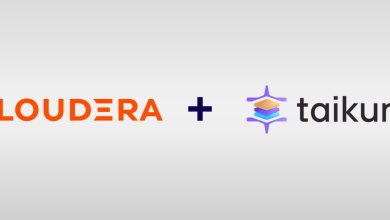
At some point, organisations must stop settling for survival and instead strive to thrive. They need to take things up a notch. They have to upgrade. They should level up. But organisations cannot do that if they are stuck with using legacy technologies. And it appears quite a lot of businesses in Southeast Asia are still using old systems and are, therefore, not yet ready to up their game.
 “For businesses to grow into the next level of viability and profitability, they need to move away from legacy technology and fully embrace a data-driven strategy, and this begins at the foundation of information—from the database, its structure, storage practice and scalability,” explained Chin-Heng Hong, VP of Product Management at Couchbase, in an exclusive interview with Data & Storage ASEAN.
“For businesses to grow into the next level of viability and profitability, they need to move away from legacy technology and fully embrace a data-driven strategy, and this begins at the foundation of information—from the database, its structure, storage practice and scalability,” explained Chin-Heng Hong, VP of Product Management at Couchbase, in an exclusive interview with Data & Storage ASEAN.
Hong cites the cases of Pfizer and Marriott International as compelling examples. Pfizer, the world’s largest pharmaceutical company, and Marriott International, one of the world’s largest operators of residential, hotel and timeshare properties, had previously been using a legacy database before upgrading to a modern, flexible, high-performance database with the help of Couchbase. This modern solution, in turn, has enabled Pfizer to store all patient interactions and patient data in the cloud and Marriott to “create elevated customer experiences for the modern age.”
Why Modernising the Database Is Transformative
So, the question is: Why is a modern database foundational to transformative change?
Put simply, a modern database can help organisations derive valuable insights out of their data and then use these to meet the expectations of today’s demanding and discerning—many of whom expect digital experiences with the brands they interact with. To be fair, traditional databases can help in that regard as well but not to the degree that modern databases can do it.
“Traditional databases consisting of relational databases, data warehouses and legacy technology have been the way businesses stored and analysed data in the last 30 years,” said Hong. “While this has worked in the past, the present-day requirements for applications to be future-proof means that monolithic traditional databases, which are often on-premises, would suffer terribly from limitations such as data sprawls and are unable to cope with code updates and new features while costing more to scale and maintain. As such, the reliance on traditional databases makes application upgrades difficult, with 61% of businesses reporting delays in transformation due to legacy databases.”
Such upgrades are going to be even more crucial now, with EY noting how Asian consumers have become more tech-savvy—and more demanding and sophisticated in their digital experience expectations. Businesses are then under immense pressure to meet said expectations, and this is necessitating proactive action in terms of “improving web and application features and enhancing UI and UX capabilities to the adoption of newer technologies.” Add to all that the predicted data explosion as a direct result of the growing number of device users in the Asia Pacific and the need for a modern database is only underscored.
Change Is a Challenge
While change can be game-changing, Hong understands that it can also be challenging—and that the results are never guaranteed. A report by the Boston Consulting Group confirms the latter, as it found that only one-third of digital transformations are successful. The reluctance to go all-in on change is, thus, unsurprising and understandable, especially given two critical factors: Business-wide comfort with the internal status quo and the lack of relevant digital skills.
“Cloud adoption is a challenge that many businesses today struggle to navigate. While the cloud is both a technology and a business strategy, Asia Pacific businesses need the ability to drive change to deliver value,” Hong pointed out. “Southeast Asian businesses that are comfortable and familiar with their current legacy databases will find it hard to embrace new technologies due to lacking digital talents in their workforce.”
Hiring digital talent, not coincidentally, is one of the six factors to a successful transformation as outlined by Boston Consulting Group—along with having a clear digital strategy, implementing top-down change leadership, ensuring agile governance, measuring and monitoring progress and deploying digital platforms that meet needs.
That skills gap, evidently, is quite wide, with McKinsey reporting that businesses need to begin upskilling and reskilling their workforce to meet this shortage of digital talent. Crucially, most of those with relevant skills are oftentimes recruited by multinational conglomerates, which have no problems attracting top talent given their vast reach and financial capacity. But as Hong notes, the same cannot be said of the 70 million MSMEs (Micro, Small and Medium Enterprises) in Southeast Asia. This means smaller businesses in Southeast Asia are likely to contend with legacy databases—at least until they say enough is enough, according to Hong.
Modernising the Database: A Guide
Despite the challenge of change, companies need to meet it head-on and modernise their database. To this end, Hong recommends they use the four metrics for database modernisation as a guide. Cloud readiness, upgrade readiness, migration services and architecture review.
- Cloud readiness. A crucial first step, Hong explains, is to ensure that the architecture is understood and well-defined. This will make it easier to validate use-cases easily after the application is deployed in the cloud. As part of this step, the business must consider its existing data models and operations and how they intend to expand application functionality. This ensures that the organisation and its developers are on the same page.
- Upgrade readiness. This step is all about an organisation having a business plan in place to upgrade its cloud deployments so as to reap the most benefits from it. It is imperative here to consider cloud platforms that offer performance and security updates.
- Migration services. Here, the business must determine how they will do the migration: Either piecemeal or migration as a whole. Cloud platforms offer different migration services, and it is crucial to take these services into account to ensure the correct execution of the legacy transformation.
- Architecture review. This means a thorough review of the application architecture and deployment implementation to “ensure existing and planned application upgrades are realistic and feasible”—but without compromising performance and reliability. In this case, a cloud partner that helps in reviewing the application architecture will prove highly helpful.
A Great Pair: Multi-Model Database and Micro-Services
Hong also advises businesses to consider a multi-model database—a data platform that supports different data models—which has “become a modern-day requirement for many applications.” Using a multi-model, according to Hong, has helped many businesses flourish by “supporting a unified and integrated data backend, helping businesses shorten time-to-market offering and lowering costs during deployment and maintenance.”
Tying things up nicely would be the extensive use of micro-services—something many companies are already doing anyway regardless of their database. Pairing micro-services with the multi-model approach, Hong explained, “results in increased performance, greater flexibility and easier stakeholder use but at a lower cost of ownership.”
“Its memory-first architecture lets you scale for performance without compromising latency, enabling the business to launch mission-critical applications at scale,” said Hong. “Our Couchbase customers also use SQL++ for executing industry-standard ANSI SQL queries against JSON data with dynamic schema constructs. There are many advantages to this approach, including no learning curve for developers, familiar JSON structures and SQL queries, and easier migration from RDBMS (Relational Database Management System).”
Opting for the Better Alternative
While it is true that you do not need to fix what is not broken (legacy databases still work to a degree), you can most certainly opt for something better. That something better is the modern database. It is out there and available, and you ought to make that switch now if you want to take your business to the next level.




